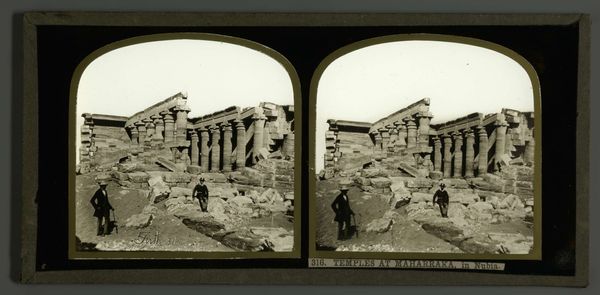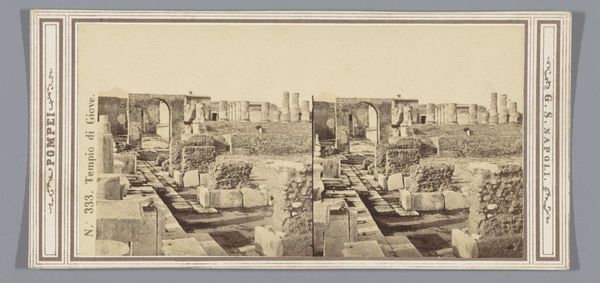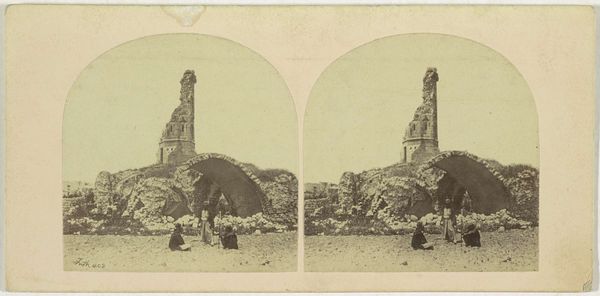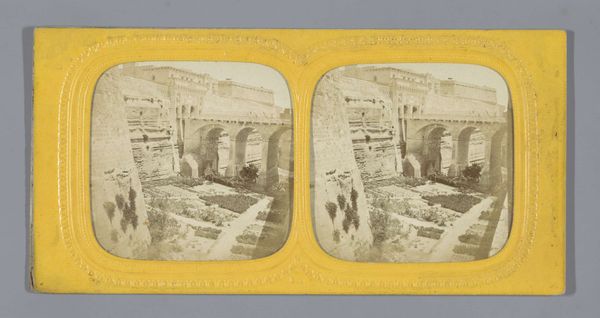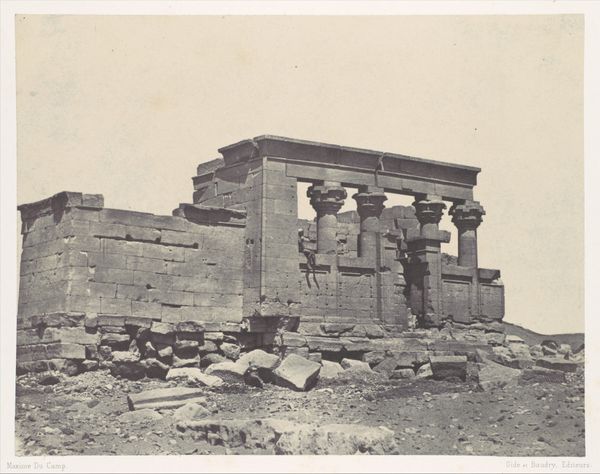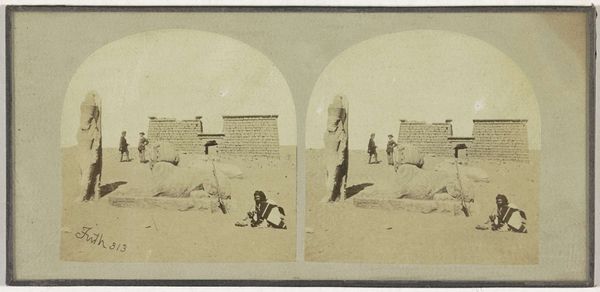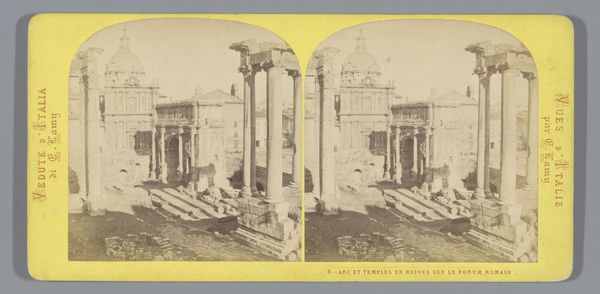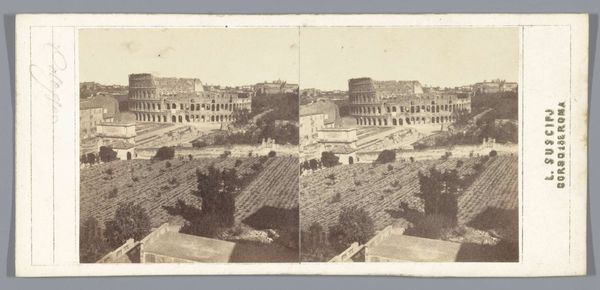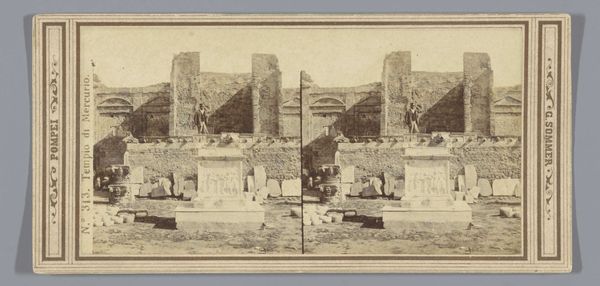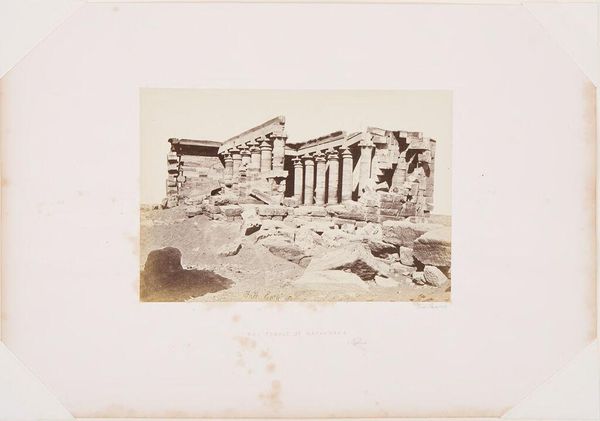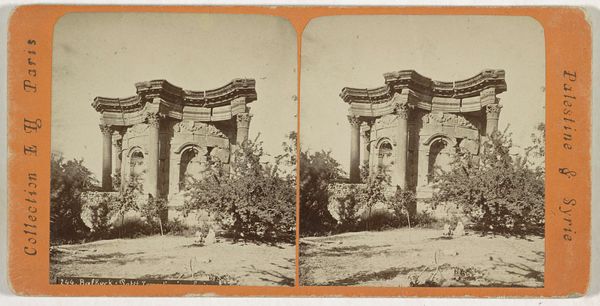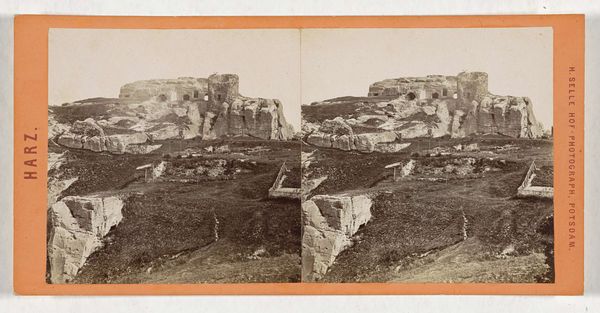
photography, albumen-print, architecture
#
landscape
#
ancient-egyptian-art
#
photography
#
ancient-mediterranean
#
albumen-print
#
architecture
Dimensions: height 68 mm, width 70 mm, height 68 mm, width 70 mm, height 83 mm, width 172 mm
Copyright: Rijks Museum: Open Domain
Curator: Here we have Francis Frith's "Tempel van Kalabsje, Egypte", created sometime between 1856 and 1860. It's an albumen print mounted on card, a stereoscopic view held within the Rijksmuseum's collection. Editor: Immediately, I'm struck by how monumental it feels, and then how quickly that grand feeling is complicated. There's a melancholic beauty here, a sense of vanished power, those crumbling stones whispering secrets in the relentless sunlight. It's more ruin than temple, which somehow makes it feel all the more vital. Curator: Absolutely. The stereoscopic format itself creates a compelling tension. On the one hand, its enhanced three-dimensionality provides an almost hyper-realistic rendering of the temple's architectural details. On the other, this very clarity throws its state of decay into sharper relief, highlighting the relentless processes of entropy. Editor: I feel this image becomes a meditation on time. Frith, though documenting a specific structure, hints at the broader cycle of creation, destruction, and memory. What’s curious is how this old image gives the illusion of feeling physically in front of the stones; one gets the feeling of feeling the intense heat and even hearing the desolate echoes in the columns. Curator: Observe how Frith employs the human figures as scaling devices. Their presence is not incidental. By positioning them at the base of the structure, he establishes a proportional relationship, augmenting our comprehension of the temple's sheer scale and gravitas within the vast landscape. This serves to underscore the impact that such a magnificent site imprints on the observer's sensory experiences. Editor: Exactly, it almost feels as though we are also time travelers on location with Frith himself! Even more intriguingly, that tension between immediacy and detachment – that paradox really embodies how we continue to grapple with the vestiges of lost civilizations. Curator: Precisely. Through sharp lines, strategic perspective, and its rich monochrome palette, Frith offers us not just a visual record but an allegorical meditation. It invites reflection on history, empire, and ultimately, human impermanence itself. Editor: It's amazing how much weight such an old image carries; the texture, form and emotion swirling into something that truly encapsulates past and present. I'm leaving with more questions than I arrived with, a good sensation, ultimately!
Comments
No comments
Be the first to comment and join the conversation on the ultimate creative platform.
